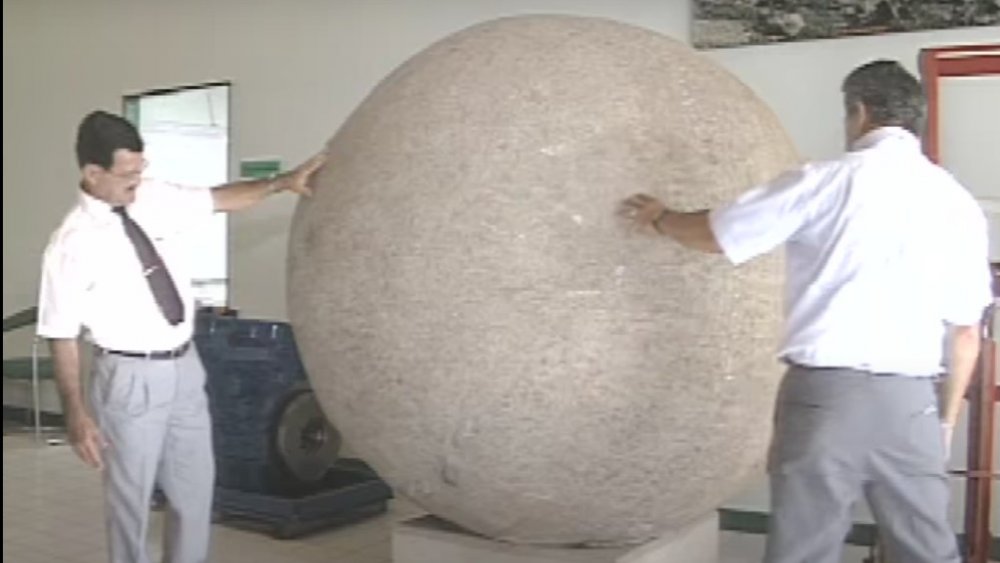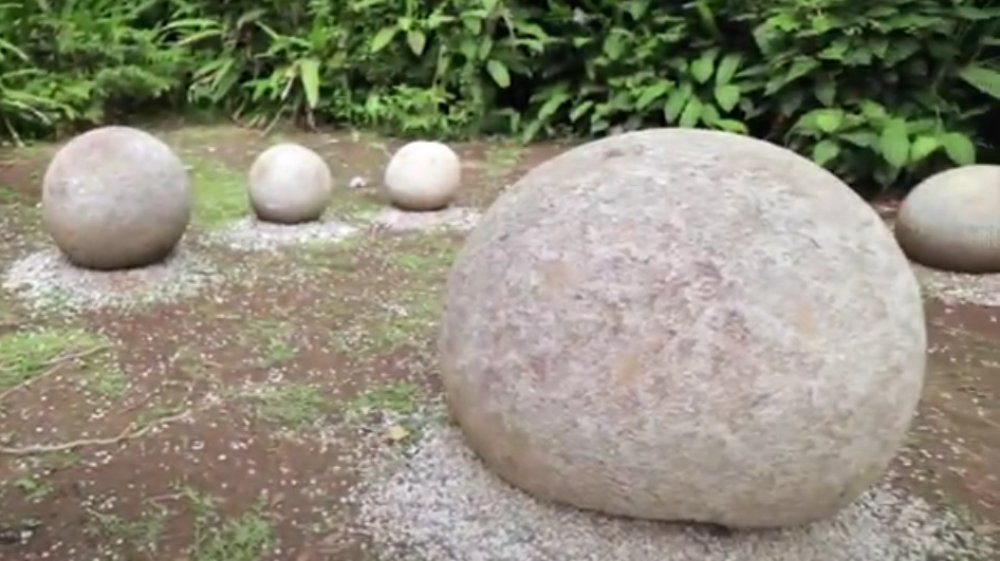The Mystery Of The Stone Spheres Of Costa Rica
Set off into the forest, who knows what you'll find? Christopher Robin announced to Pooh that "We are all going on an expedition" in order "to discover the North Pole." ("It's just a thing you discover," he explained.) Imagine the surprise if you're out on sort of an expedition into the forest and mostly you're there to discover how many trees you can cut down and clearing land for an internationally huge fruit company and what you discover are round spheres. Made out of rock.
That's what happened in the 1930s to employees of the United Fruit Company. They were laboring to clear land in Costa Rica's Diquís Valley to establish banana plantations when they stumbled upon the spheres — almost perfectly round, crafted from solid stone, says Atlas Obscura. Since then, around 300 of the spheres have been found, of various sizes, anywhere from a few centimeters to six feet in diameter, according to Green Global Travel.
It was a remarkable find. Perfectly round rock isn't particularly common in nature. What were they? Who (or what) made them? And why? And in the meantime, they're in the way of future bananas. Heavy equipment was used to push them out of the way, damaging the remarkable finds. And then someone decided that there must be told in the center, and so several were broken open. (Spoiler: No gold.)
They vary widely in size
And then someone else said "Well, those are kind of cool and would look good on my lawn," or words to that effect, and so they were moved — onto private properties. Six were saved and are on display in Costa Rica's National Museum in San José.
Where did they come from? Who made them, and why? Nobody knows for certain. Ancient Origins Encyclopedia reports speculation that the spheres date back to around 600 CE, but even that's just a guess. How were they crafted in an era and area without metal tools? John Hoopes, associate professor of anthropology and director of the Global Indigenous Nations Studies Program, told Ancient Origins that the peoples who might have made them "became extinct shortly after the Spanish conquest" and left no written records that would explain the spheres or anything else.
Whatever their origin (aliens? Elvis?), the spheres are now protected by UNESCO (United Nations Educational, Scientific and Cultural Organization): They "represent an exceptional testimony to the artistic traditions and craft capabilities of Precolumbian societies."

